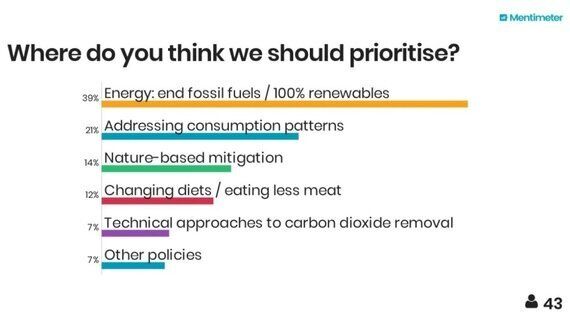
As the climate change negotiations continue, the two most talked about numbers over the past week were 280 (as in the doubling of the twitter character limit) and 1.5 (as in the degrees Celsius temperature rise limit from the Paris Agreement). These numbers are related.
Two Hundred and Eighty
Last Wednesday the twitter hashtag #280characters went viral (however, my own effort sadly did not). So how is the number 280 connected with climate change? Well, 280 parts per million (ppm) is also the baseline concentration of carbon dioxide (CO2) in the earth's atmosphere - sometimes referred to as the pre-industrial level. NASA reports that air bubbles trapped in ice show that CO2 levels were around 280 ppm during the warmer interglacial periods. It is now 44 per cent higher. Why is this an issue? It is because a higher atmospheric CO2 concentration is like a thicker blanket over the world which traps more heat and leads to the higher global temperatures and consequential climate-change-related impacts such as longer heat-waves and sea-level rise.
One point five
The Paris Agreement's 1.5°C temperature limit is also being talked about. It has been the theme of several events here in Bonn including linking with oceans, food security, displacement and migration. One underlying messages is that even 1.5°C warming will still result in some large and disruptive climate impacts. The Intergovernmental Panel on Climate Change (IPCC) is producing a Special Report on 1.5°C for October next year - this will cover issues such as emission pathways and impacts.
In an event in the WWF Pavilion we asked the audience what they thought about 1.5°C and, while no means scientific (see some of the results below), the voting prioritised transitioning energy from fossil to renewable but also highlighted that action was needed across the board - including in consumption, changing diets, and nature-based mitigation (things such as ecosystem restoration or reforestation). Technical approaches to remove CO2 from the atmosphere were lower priority; but other events over the week suggest that the limiting to 1.5°C is not possible without these.

Climate Interactive's Climate Change Policy Simulator is a great, free tool which shows how difficult 1.5°C is and that strong actions from all countries will be required.
Rhythm of the negotiations
These Fijian-led climate change negotiations (COP 23) are so far following the typical rhythm that the two-week talks take. In this second week some Heads of State and Government and many environment or climate ministers will come to deal with the more political issues that negotiators have not managed to solve in the first week. The high-level representatives will also present what their government is doing. I'm particularly interested in hearing what the UK Minister of State for Climate Change and Industry, Claire Perry, has to announce after her teaser answer in Parliament last week. In response to being asked about her objectives for COP, Minister Perry replied "...I will be using the conference to announce further investments and further approaches the UK is taking to push our world leadership position forward...". More on this next week.
The United States - and some more numbers
While 280 and 1.5 were the most common numbers discussed, the United States was the top topic. Given the US federal government's quieter role in the negotiations and lack of US Pavilion, American non-state actors (such as cities, states and businesses) picked up the mantle and brought the US Climate Action Center to Bonn. We Are Still In is the largest coalition ever assembled in the US in support of climate action. It has over 2,500 signatories, and its membership represents $6.2 trillion of the US economy and is comprised of 9 states, 252 cities and counties, 1,780 businesses and investors, 339 colleges and universities, 213 communities of faith that include multiple religions and other sectors. The pavilion is the first of its kind and is being sponsored exclusively by non-federal US actors and will showcase America's efforts to address climate change throughout the duration of the negotiations. Its presence here in Bonn is a reminder that US leadership on climate change extends well beyond federal policy.
Are we all in?
The Paris Agreement on climate change gave the world real hope that through collective leadership and shared responsibility we can solve the problem that is climate change. Every nation has a part to play and it's clear the UK Government needs to be doing more as a global leader on climate action. We need to see a greater proportion of electric vehicles on our roads, more energy-efficient houses, and more renewable technologies like solar and windfarms. So far the UK Government has outlined its plan in the Clean Growth Strategy in reaching the targets set. This plan included some significant steps forward.
This week we wait with bated breath for Claire Perry to ramp up climate action and support for developing countries and answer the question - What numbers will the UK announce this week?